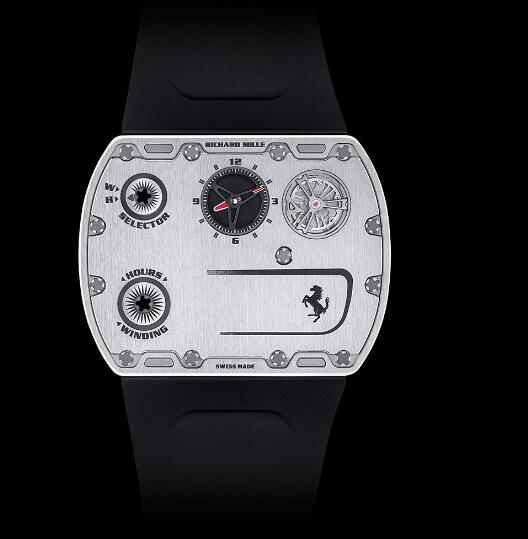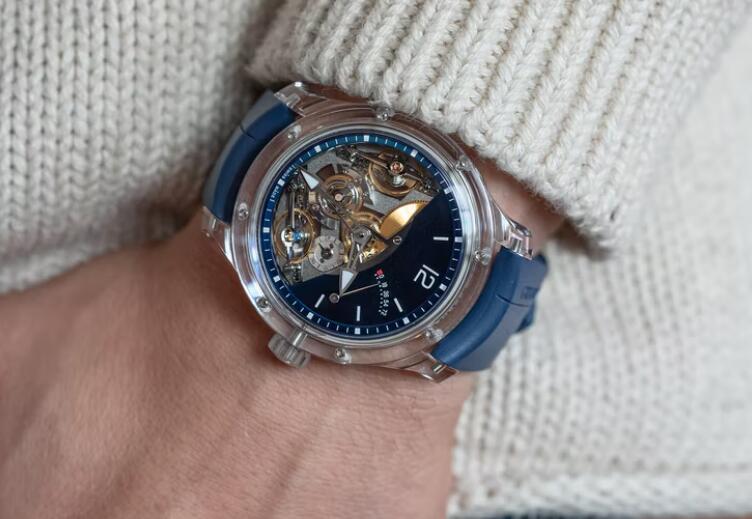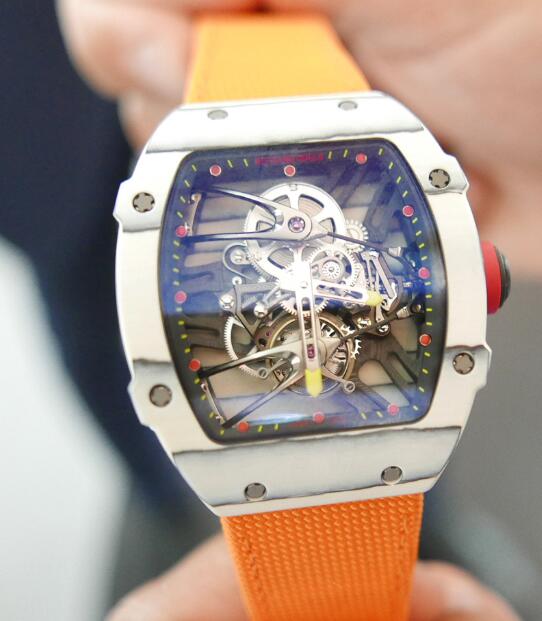
Adding a new dimension to the enduring challenge of ultra-thinness among major Haute Horlogerie brands, Richard Mille has just set a new world record in the thinnest mechanical watch category with his new RM UP-01 Ferrari.
At just 1.75mm thick, the Richard Mille RM UP-01 surpasses the thinness record set earlier this year by the Bulgari Octo Finissimo Ultra (1.80mm). Combining the most modern design with performance, aesthetics and robustness, this new ultra-thin watch was developed in collaboration with the renowned Italian car brand Ferrari.
The RM UP-01 Ferrari is the culmination of years of work and over 6,000 hours of development and laboratory testing. This ultra-thin watch is equipped with a sturdy hand-wound mechanical movement that can withstand accelerations of over 5,000 grams.
The Richard Mille RM UP-01 Ferrari has a monolithic case made of grade 5 titanium. Its case back and bezel are satin-finished with polished bevels. The ultra-thin case is secured with 13 grade 5 titanium spline screws and 316L stainless steel wear-resistant washers, and is water-resistant to 10 meters.
This watch features a distinctive face (bezel) design. It displays the hours and minutes on the upper sub-dial. This sub-dial is topped with sapphire crystal glass. On the upper right of the dial is the balance wheel dial, protected by sapphire crystal.
On the top left you will find an integrated function selector with two positions: W (winding) and H (manual setting). The rotating crown between 7 o’clock and 8 o’clock provides two functions: manual winding movement and time setting. Both crowns are protected with black ceramic inserts to ensure water resistance and eliminate friction.
This perfect replica watches features a patented ultra-flat escapement jointly developed by Audemars Piguet and Richard Mille. This new escapement with a titanium balance wheel significantly reduces the thickness of the movement while offering the same safety as a traditional Swiss anchor escapement. The new patented ultra-flat escapement eliminates components such as guard pins and safety rollers to keep the movement thin.
The hand-wound mechanical movement with hours, minutes and function selectors has a power reserve of 45 hours.
Its baseplates and bridges are made of grade 5 titanium, a biocompatible, highly corrosion-resistant and strong alloy. The hollow base plate undergoes individual and extensive verification testing to ensure that it meets stringent optimum strength requirements.
For this watch, Richard Mille has provided an ultra-thin interpretation of its signature tonneau shape. The grade 5 titanium case is just 1.75mm thick, and the beating movement inside is 1.18mm thick.
The 23-jewel hand-wound extra-flat movement measures 41.45mm long and 28.85mm wide. It is balanced at 28’800 vph (4 Hz).
All titanium case components of this ultra-thin timepiece are machined by the Richard Mille movement department to meet the extremely tight machining tolerances of a single micron. The Ferrari Prancing Horse logo and all references on the case are laser engraved.
The Richard Mille RM UP-01 watch is a limited edition. It only weighs 30 grams including the strap.

